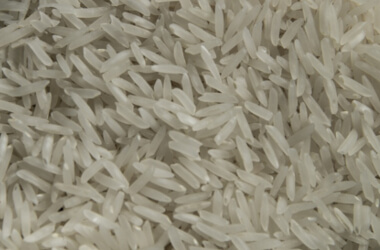Now iron fortified rice to combat anaemia!
Q. DBT scientists have fortified which cereal with iron to ensure the problem of anaemia is addressed?- Published on 20 Oct 16a. Rice
b. Wheat
c. Jowar
d. Maize
ANSWER: Rice

To address the problem of anaemia in the country, scientists of the department of biotechnology have developed innovative ways to fortify rice with iron which can be mixed with normal rice and consumed without losing out on the flavour
- Fortified rice using broken rice kernel through DBT technology matches the normal rice kernel in shape, size and sheen
- It provides 50% of the recommended daily allowance of iron to children when mixed with the normal rice in the ratio of 1:100
- Clinical studies substantiate that regular feeding for one year increases iron store and decreases anaemia in school going children according to DBT scientists in the note on rice fortification
- The National Family Health Survey conducted in 2005-2006 found that prevalence of anaemia was there in 70 percent of the children of 6-59 months age group
- Anaemia is a low haemoglobin condition that results on weakness, loss of energy and shortness of breath
- It is mainly caused by iron deficiency
- As the Indian population is primarily vegetarian, it is dependent on plant based sources which limits iron absorption in the body
- This has led to iron deficiency in a massive section of the population
- Rice fortification initiative was first launched in India by the UN World Food Program in Odisha where a pilot programme on iron fortified rice was served to children under the Midday meal program in Gajapati district earlier in 2016
- DBT’s technology will enable the rice fortification model to move forward in other parts of the country where there is nutritional deficiency
- As per the DBT technology, rice is fortified through a process known as extrusion in which dough made of rice flour, vitamin, mineral mix and water is passed through an extruder and cut into grain like structures that resemble rice grain
- Department explained the appropriate quantities of iron, iodine, zinc, water soluble vitamins and fat soluble vitamins. Water soluble vitamins include folic acid, B1, B2, B6, B12 and Niacin
- Fat soluble vitamins such as A and D are added to commonly consumed foods under this technology to bridge the gap between daily requirement and daily food intake